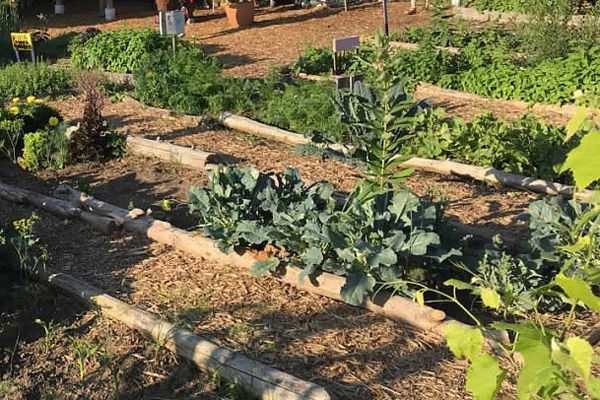Some Of City Blooming
Some Of City Blooming
Blog Article
Not known Incorrect Statements About City Blooming
Table of ContentsThe Buzz on City BloomingUnknown Facts About City BloomingCity Blooming Things To Know Before You Get ThisA Biased View of City BloomingCity Blooming Fundamentals Explained

As you stroll the streets of the Bronx, Southside Chicago or East Oakland, you might see have actually also seen large plots of ripening fruits and vegetables being collected. What specifically are urban farms and community yards? Urban farming, metropolitan farming, or city horticulture is the method of cultivating, processing and distributing food in or around city areas.
Generally, urban farming as a method is a larger investment than horticulture. There are countless much more hours invested into the trivial matters of farming, from the plant strategy to the tending of your beds. This moment commitment handles an entire brand-new definition once you recognize the goal that is being worked towards and dedicated, specifically that of getting a bountiful yield of crops to be eaten.
A neighborhood yard is a solitary parcel gardened collectively by a team of people. Community gardens make use of either specific or common stories on personal or public land while generating fruit, veggies, and/or plants expanded for their eye-catching look. The standard design below is that a big team of people each contribute a reasonably percentage of time to functioning their own story, and obtain the fruits of their labor as an outcome.
The Facts About City Blooming Uncovered

, and area organizations by assisting them develop and grow their own yards. The distinctions in between neighborhood garden and metropolitan farm are nuanced, though in the end the exact same basic task takes placefood plant growing yet within various organizational frameworks - urban gardening.
Urban farms are generally more company and modern technology oriented, with the main objective of making the most of returns and offering fruit and vegetables. Business city farms are frequently focused on increasing manufacturing on typically small land location with pop over to this site advancements in modern technologies such as tank farming, hydroponics, and greenhouses and might partner with an industrial kitchen area to produce locally-produced value-added items such as jams and sauces.
The Only Guide for City Blooming
The produce is typically grown on a much smaller scale and is taken home to eat at home or to share. By giving much needed green rooms in destitute, concrete city areas, they permit the advantages of yard horticulture to those lacking yards, and function as superb instances of self-organization and neighborhood advocacy.
Some community gardens, frequently in metropolitan locations, relocate into growing for industrial use while some metropolitan ranches open up their land for even more socially aware benefits. Regardless of how you define and separate the 2, they are both favorable pressures for good in cities around America and the world.
As every one of Tiny Axe Peppers' warm sauces are sourced with peppers from area yards, your acquisitions straight aid money these neighborhood tasks (https://x3n7gir0m43.typeform.com/to/xy4y6eO6). Take component in the transformation by.
A pal of mine just recently commented in a conversation regarding horticulture that "It's intriguing, I've always believed that farming as a technique is rather like horticulture. As I invested even more and even more time in my Urban Farming class I've come to recognize that to state that horticulture is a mini extension of farming would certainly be a little bit of stretch.
Our City Blooming Statements
They both rotate around the care of plants for some objective that can be sustenance, revenue or just the pleasure of the craft. Additionally they both require a financial financial investment on top of a time financial investment, something that a great deal of individuals in our quick paced life do not have a great deal of - container and raised bed gardening etc..
We can see that the similarities are bountiful, but are the distinctions enough to produce a difference? As a trainee at NYU I have the possibility to collaborate with the leave It Better Structure, a team that instructs basic nourishment and horticulture to high college pupils. https://profile.hatena.ne.jp/cityblooming/. This experience offered me a thorough foray into the world of amateur gardening beyond what many people have touched with
With these in hand, I can securely state that these 2 tasks are fairly truthfully various monsters. Farming as a practice is a bigger investment than horticulture. There are plenty of much more hours spent right into the minutiae of farming, from the crop strategy to the often tending of your beds. This time around commitment tackles an entire new significance once you realize the objective that is being functioned towards and devoted, namely that of getting an abundant return of plants to be taken in.
The typical garden enthusiast tackles his obligations as a chore instead than a need and thus identifies his or herself from the farmer. With this distinction in hand, they are both calming and soothing workouts that any person can pick up, which by itself needs to be a promotion for both.
Some Known Questions About City Blooming.
Something failed - eco-friendly practices. Wait a minute and attempt once again Try again
Report this page